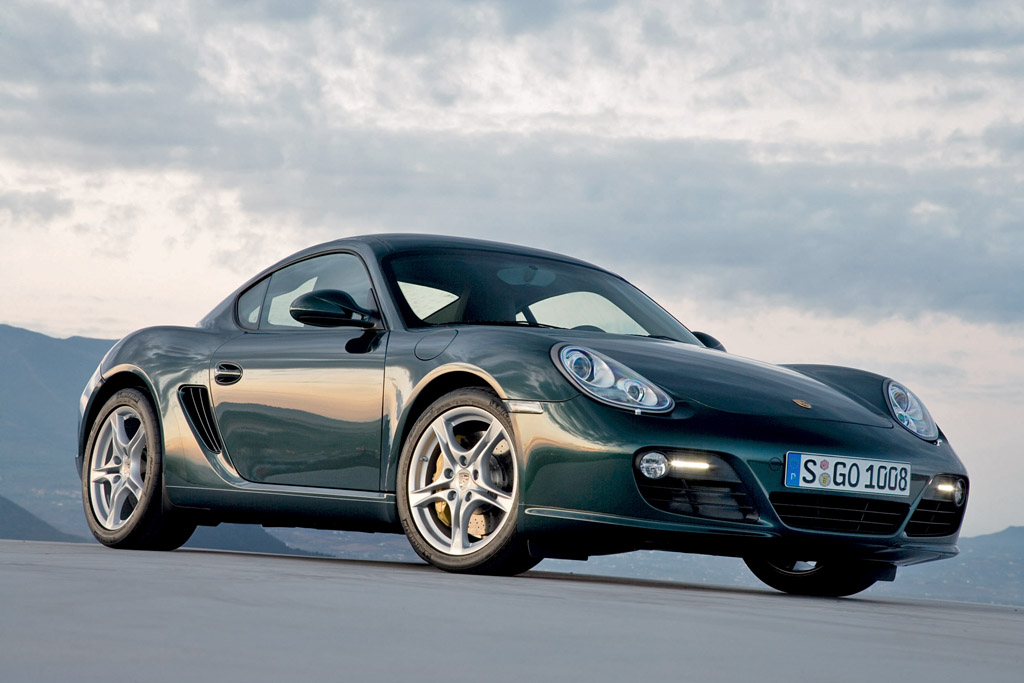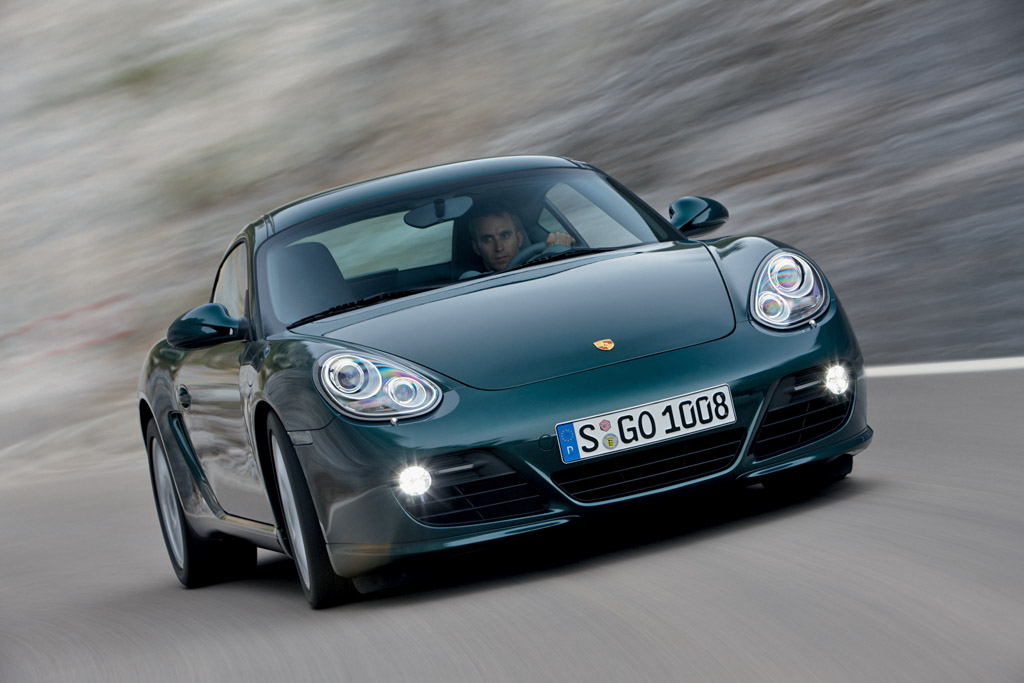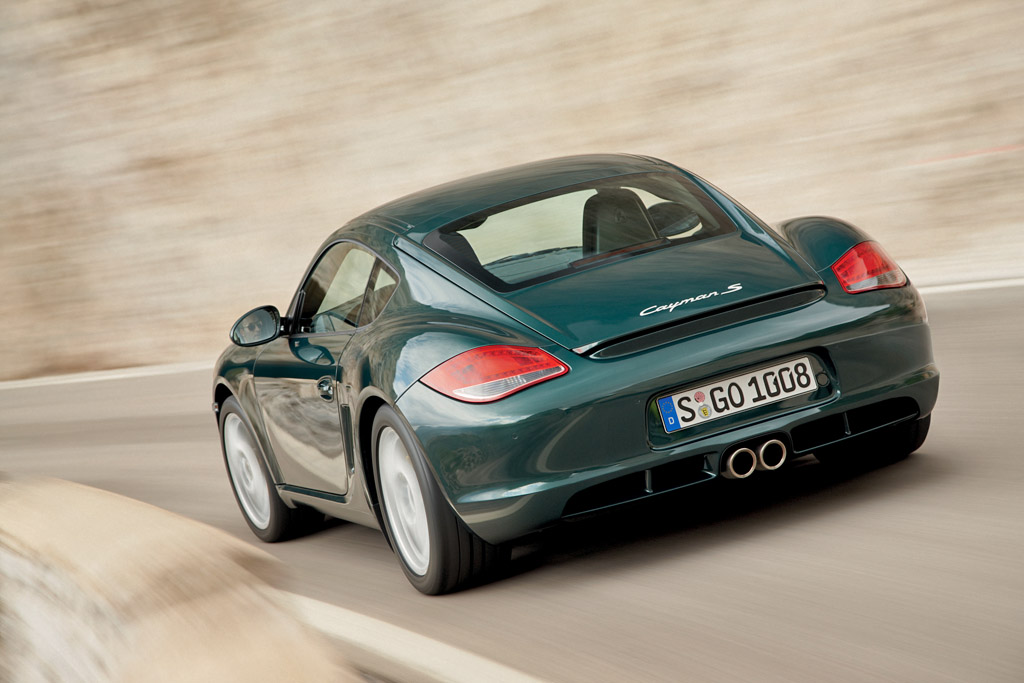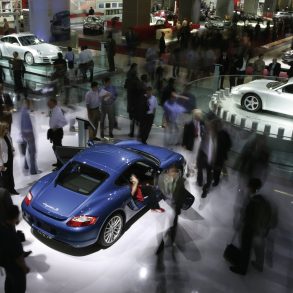(2009 – 2012) Porsche Cayman S – Ultimate Guide
Four years after the introduction of the Cayman S, the sportier version of the mid-engine sports coupe Porsche was refreshed. It was even faster and could carry more cornering speed. The facelifted version of the Cayman S offered a completely enhanced package. From the exterior to the interior, from the engine to the gearbox and suspension, it was reworked. It might be mistaken with a new model if the Porsche internal coding system wouldn’t be the same as on the 2005 Cayman S (987C).
At the front, a new pair of headlights were installed, with a bigger lens for the main beams and the stationary lamps. The fog-lights were installed upper and on the outer side of the side air-scoops from the apron. A reshaped, and smaller, front grille was installed. In the back, the taillights were completely different and featured all red-lights with LEDs. The exhaust was replaced with a twin-round unit, instead of the single, rectangular, unit as on the non-facelifted version.
Inside, the new infotainment unit with a 5” screen and MP3 compatible CD-player was featured as standard. As an option, a PCM (Porsche Communication Management) with a 6.5” touch-screen was installed for more options. The Bluetooth connectivity with the mobile phone was offered as an option for both versions.
The engine was kept at 3.4-liter displacement, but due to its new direct-fuel injection system, the power was increased by 25 hp over its non-facelifted version. It was paired with either a 6-speed manual or a 7-speed PDK (double-clutch) automatic gearbox.
2020 Model Year
No major changes for this second year of the Gen II Caymans. Base price of the Cayman increases by $1,100 to $51,400 in 2010. Base price of the Cayman S increases by $1,300 to $61,500. After 4 years, Midnight Blue Metallic has been retired and replaced by Dark Blue Metallic. Midnight Blue Metallic had a lot of red content that made it look purple under certain light conditions, where the Dark Blue Metallic has less red and more green giving it a turquoise quality at times.
Probably the most exciting new option in 2010 was the PDK Sport Steering Wheel with paddle shifters. Many folks found that the steering wheel mounted shift buttons could be accidentally pressed during fast steering movements. The paddle shifters are further out of the way and add a sporty feel to a PDK Cayman.
There were also many exterior painted options including Decorative trim on Gear Lever painted in exterior color, Dashboard trim strips painted in exterior color, Instrument surround painted in exterior color, Headlamp washers painted in exterior color, Model designation on rear lid painted in exterior color.
Press Release
LOS ANGELES – November 19, 2008 — Porsche today presented the next generation of the mid-engined Boxster and Cayman sports cars at the L.A. Auto Show. Both cars provide not only more power, but significantly greater fuel efficiency than their predecessors. Further improving fuel economy and performance is the seven-speed Porsche Doppelkupplungsgetriebe – or PDK for short – double-clutch gearbox.
Newly developed Boxer engines with even more power on even less fuel
A newly-enlarged 2.9-litre flat-six engine develops 255 bhp in the Boxster and 265 bhp in the Cayman, an increase of 10 and, respectively, 20 bhp over preceding models. The 3.4-litre power unit in the S versions, benefiting from Direct Fuel Injection, now delivers 310 bhp in the Boxster S and 320 bhp in the Cayman S, up by 15 and 25 bhp.
The new Boxster and Cayman are significantly more fuel-efficient than their predecessors. The new 2.9-litre Boxer engine sips 8.9 litres of fuel per 100 kilometres (combined) – 11 per cent less than the former models with Tiptronic S. Reducing fuel consumption by 16 per cent to 9.2 litres/100 kilometres, the 3.4-litre versions with PDK offer an even greater saving.
The two-seaters are clearly distinguishable from outside through their new front and rear ends. Halogen headlights with integrated direction indicators are reminiscent of the lights on the Carrera GT, while LED rear lights taper to the outside and integrate elegantly into the modified rear end.
From the front, the roadster and coupé differ through the distinctive design of their air intakes and, from the rear, through the new rear panels with diffuser inserts on the Boxster and a wind deflector plate on the Cayman. The rod-shaped LED positioning lights add a touch of class in terms of the cars’ looks. The standard foglamps are rectangular in shape on the Boxster, round on the Cayman.
For the first time, both models are available with a Lights Package featuring bi-xenon headlights, dynamic curve lights and LED daytime driving lights. Replacing the foglamps, these light units are made of four LEDs positioned next to one another on the Boxster, while on the Cayman four LEDs are arranged in round light units like the eyes of a dice.
PDK: shifting gears more quickly, reducing fuel consumption by up to 16 per cent
The Boxster and Cayman are available for the first time with the seven-speed Porsche-Doppelkupplungsgetriebe, or PDK, which replaces the former Tiptronic S. Equipped with this double-clutch gearbox, the roadster and coupé accelerate to 100 km/h 0.1 seconds faster than with the six-speed manual fitted as standard on all models.
PDK cars’ acceleration is even more dynamic with one of the optional Sports Chrono Packages featuring Launch Control for maximum acceleration from a standing start, while the Race Track Gearshift Strategy offers the fastest possible shifting on the track. With Launch Control, the respective models accelerate from a standstill to 100 km/h another 0.2 seconds faster. (For instance, the Cayman S with PDK and Launch Control accelerates to 100 km/h in 4.9 seconds, while the base Boxster with its new six-speed manual gearbox completes the same exercise in 5.9 seconds.)
The progress offered by PDK is even more impressive when it comes to fuel economy, which is reduced by up to 16 per cent from previous models.
New audio and communication systems
Both the Boxster and the Cayman come as standard with the new CDR-30 CD radio, with an easy-to-read five-inch display and the ability to play MP3 CDs. Porsche Communication Management (PCM) 3.0 is available as an option, with hard disk–based navigation and an improved touch-screen interface. PCM is more versatile, efficient and far easier to use than before and the screen has increased in size from 5.8 to 6.5 inches. As an option, PCM is available with voice control and, in conjunction with the optional universal audio interface, can now control external audio sources such as an iPod® or USB stick.
Porsche’s new two-seaters are also available with seat ventilation, combined with seat heating, on both standard and comfort seats with full or partial leather.
Dynamic suspension and supreme brakes
A new suspension set-up gives the new models a combination of even greater driving dynamics and enhanced comfort. Steering forces have been further reduced, giving the Boxster and Cayman even more agile and spontaneous steering behaviour.
The wheels come in new designs and are half an inch wider on the Boxster and Cayman than in the past in order to accommodate the larger brake system from the S models on the front axle. All Boxster and Cayman models feature the latest generation of Porsche Stability Management (PSM), with two additional functions: Brake Pre-Loading and Brake Assistant.
Whenever the driver lets go of the gas pedal very quickly – which is typical of an upcoming emergency braking manoeuvre – the PSM control unit builds up an appropriate level of pressure on the brakes before the driver even presses down the brake pedal, moving the brake pads slightly towards the discs, which significantly improves brake response and shortens stopping distances accordingly.
If the driver is braking in an emergency, the control unit actively delivers the brake pressure required for maximum stopping power.





















